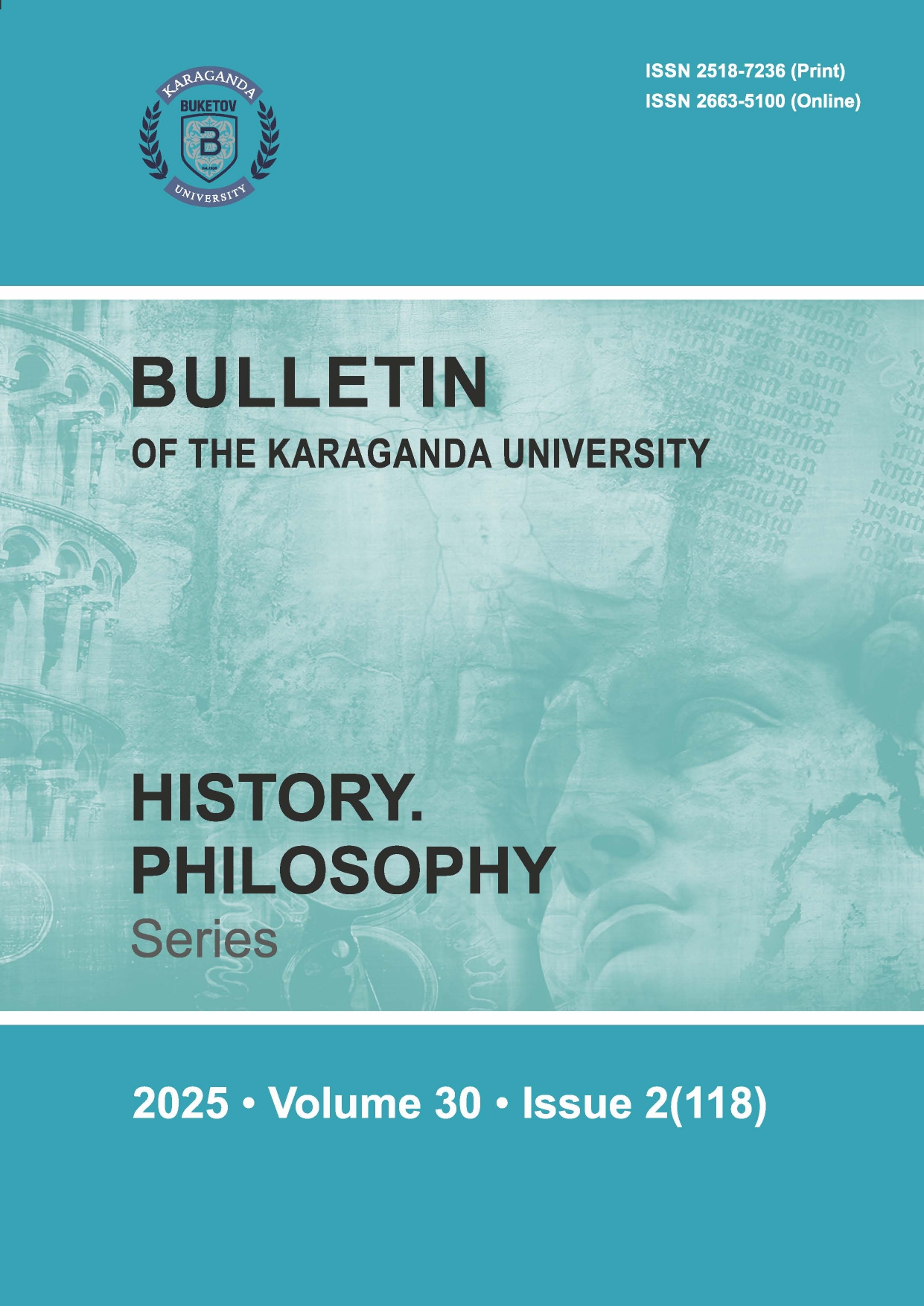The “sixteen states” of China and Toba — the “Vanished” Zhats: the kingdom of the Guptas
DOI:
https://doi.org/10.31489/2025hph2/110-117Keywords:
Zhat, small Yuezhi, Toba, sixteen states, Inscription of Vo-Canh, Empire, Guptas, Zhete, Southeast India, Asia, Inscription of AshokaAbstract
The article examines the “disappeared” Zhat or “Zhete” tribes, as the people of Turkestan. The Xiongnu (Xiongnu), Xianbi (Yuezhi, Toba), in conflict with the Chinese and among themselves, created the non-Chinese people of the “Sixteen States” and “Toba,” among which the “Later Zhau,” the movement of the “Little Yuezhi” (Toba, Xianbi) was distinguished south and ethnic development of the Jat in the process of formation of the Gupta Kingdom in Funan (Cambodia). The authors analyzed a new interpretation of the Vo-Canh inscription from Nachiang using the method of discursive (hypothetical) analysis of sources about the Zhat. They give an explanation of the “Zhat” ethnic group, which was erroneously transcribed as “Jahed” (racist), “Sot” (stupid), “Goth” (barbarian) and “Jete” (robber). The events described mainly took place on the territory of modern China and Vietnam (partly in Cambodia) and the sources used were written in Chinese [“Sanguo zhi” and “Wei zhi”] in the interpretation of Western and Russian scientists, so we would like to attribute our research to Sinological, that is, referring to the “sixteen kingdoms of the five tribes.” A study of the inscriptions of Ashoka and Samudragupta in the Allahabad inscription reveales information about the social and political status of the people of that period in Southeast Asia and China.




